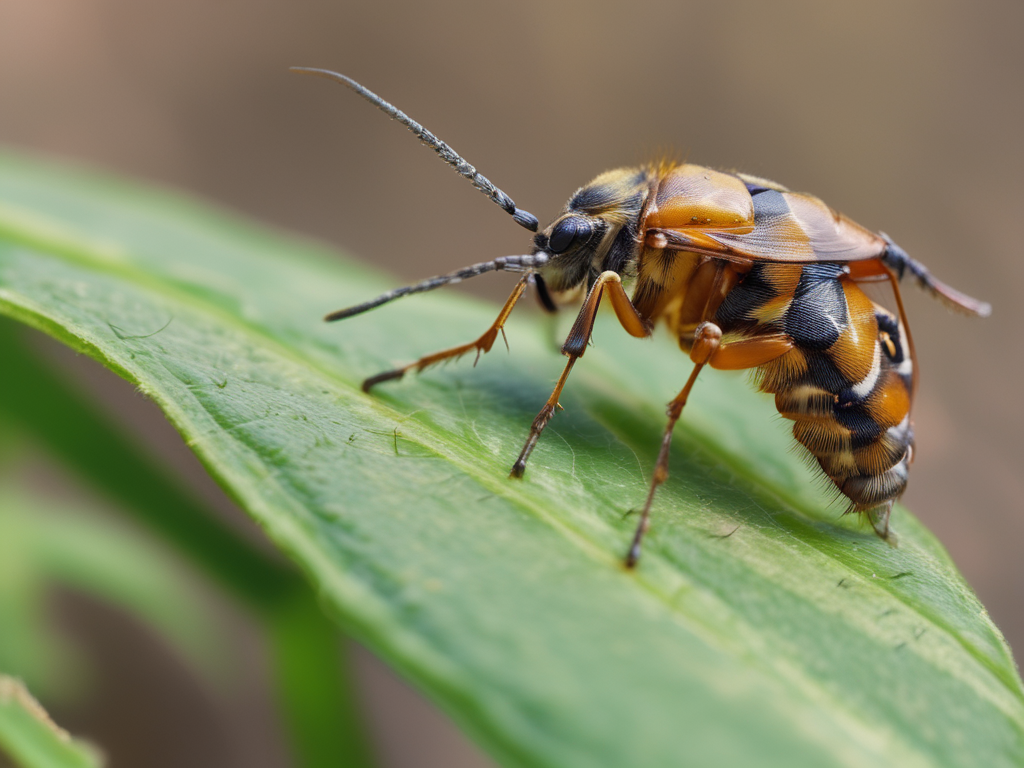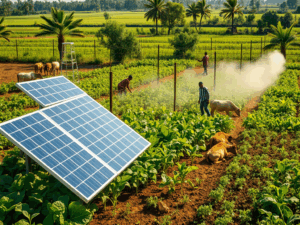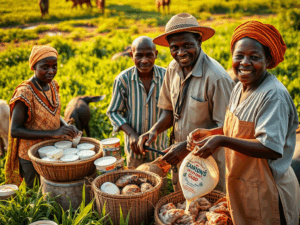Integrated Pest Management (IPM) is a critical strategy for farmers looking to sustainably manage pests while minimizing environmental and health impacts. In Nigeria and across Africa, where agriculture is a cornerstone of the economy, understanding and implementing IPM can lead to healthier crops, better yields, and more resilient farming practices. This Q&A will guide you through the essential steps to successfully implement IPM on your farm.
1. What is Integrated Pest Management (IPM), and why is it important for farmers in Nigeria and Africa?
A: Integrated Pest Management (IPM) is a sustainable approach to managing pests by combining different management strategies and practices. It reduces reliance on chemical pesticides by integrating biological, cultural, mechanical, and chemical control methods. For farmers in Nigeria and Africa, IPM is crucial for improving crop yields, ensuring food security, and reducing environmental damage caused by excessive pesticide use. By adopting IPM, farmers can lower costs, produce healthier crops, and minimize risks associated with pesticide residues.
2. How can a farmer start implementing IPM on their farm?
A: Implementing IPM involves several key steps:
- Monitoring and Identification: Regularly inspect crops to monitor pest levels and identify specific pests. For example, pheromone or sticky traps can help detect insects like the Fall Armyworm, which has significantly impacted maize production in Nigeria.
- Set Action Thresholds: Determine the pest population level at which control measures should be initiated. For instance, if 10% of tomato plants show aphid infestation, action should be taken to prevent the problem from worsening.
- Prevention: Focus on preventive measures to reduce the likelihood of pest outbreaks. Practices like crop rotation, planting pest-resistant varieties, and maintaining healthy soil are effective. In West Africa, intercropping maize with cowpea has successfully reduced the incidence of Striga, a parasitic weed that affects cereal crops.
- Control: If monitoring shows that pest levels exceed the set threshold, apply control methods. Start with the least risky options, such as introducing natural predators or using botanical pesticides like neem oil. Chemical controls should be the last resort and used sparingly to minimize environmental impact.
3. Can you provide examples of successful IPM practices in Africa?
A: Yes, here are some verifiable examples:
- Kenya: Smallholder farmers have successfully used push-pull technology, a form of IPM, to combat stem borers and Striga weed in maize fields. The push-pull method involves planting desmodium, which repels pests (push), and Napier grass, which attracts and traps them (pull). This approach has significantly increased maize yields and reduced pest infestations.
- Nigeria: Cocoa farmers in Ondo State have adopted IPM practices such as regular farm sanitation, shade management, and the use of biocontrol agents like Trichoderma to manage Black Pod disease. These methods have led to a noticeable reduction in crop losses and improved cocoa quality and production.
4. What are the benefits of IPM for African farmers, and how can it improve their livelihood?
A: The benefits of IPM for African farmers include:
- Cost Savings: Reduced reliance on chemical pesticides lowers production costs, increasing profitability.
- Environmental Protection: Eco-friendly IPM methods help protect soil and water resources from contamination.
- Healthier Crops and Food Security: Crops grown using IPM are less likely to have harmful pesticide residues, making them safer for consumption and export.
- Sustainability: IPM promotes sustainable farming practices, ensuring long-term agricultural productivity and resilience.
5. How can farmers in Nigeria and Africa be encouraged to adopt IPM?
A: To encourage IPM adoption:
- Education and Training: Farmers need access to training programs that teach IPM principles and practices. Extension services and NGOs can play a crucial role.
- Government Support: Policies supporting IPM adoption, such as subsidies for bio-pesticides or incentives for sustainable agriculture, can motivate farmers.
- Community Success Stories: Sharing successful IPM adoption examples, like those mentioned earlier, can inspire other farmers to implement these methods.
Conclusion
Integrated Pest Management (IPM) offers a sustainable and effective way for farmers in Nigeria and Africa to manage pests, protect their crops, and improve their livelihoods. By adopting IPM, farmers can ensure the long-term health and productivity of their farms, contributing to a more sustainable agricultural future.




